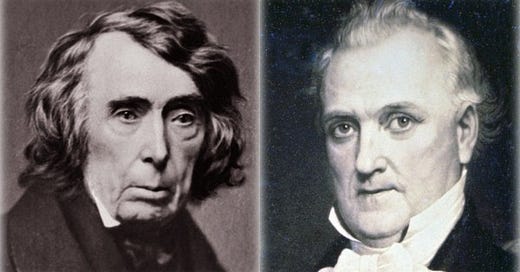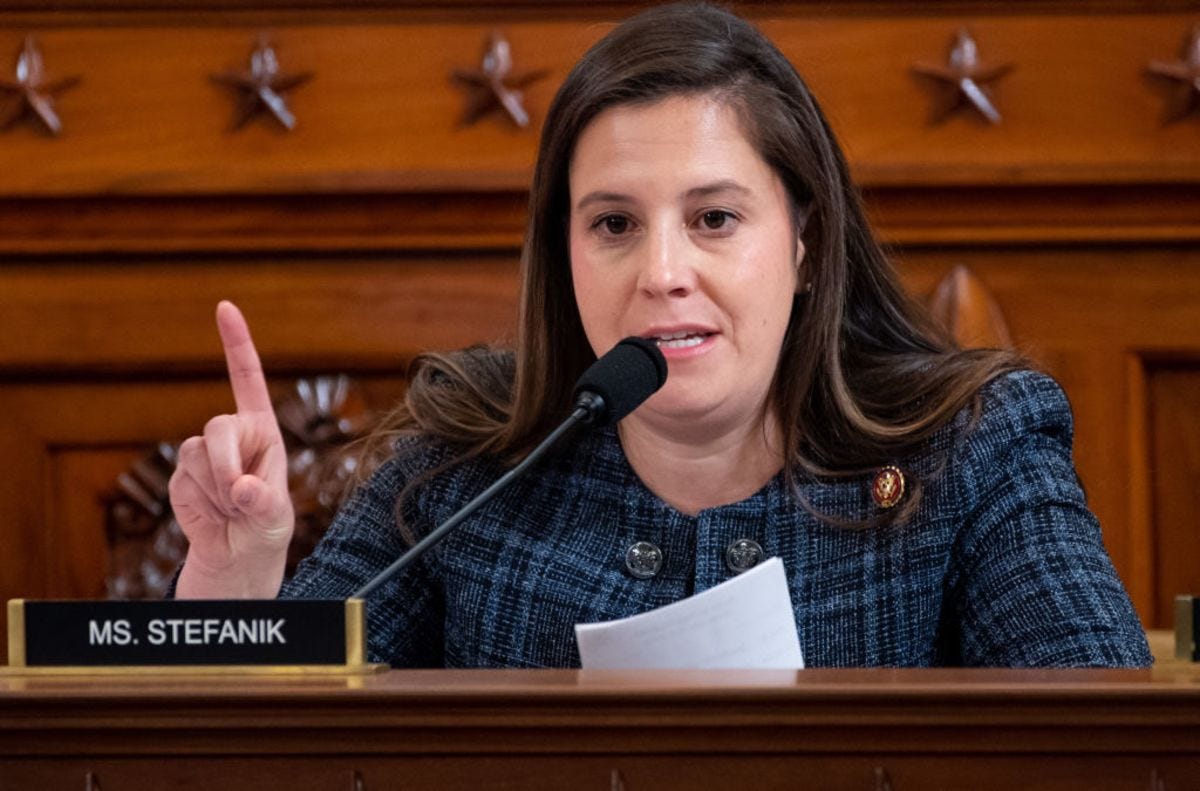What, you don't think Roger Taney and James Buchanan are relevant today?
Tell that to their faces. I dare you. Plus: Elise Stefanik, Kamala Harris, a Detroit Lions (sigh) update, and on the bright side ... scapegraces!
I do hope everyone from every denomination enjoyed their festivals of lights (including my personal denomination of irreverence and naps).
And to start this feel-good week, why wouldn’t we dig into what the mechanisms driving the 1857 Dred Scott decision tell us about our modern-day political crises?
Honestly, I didn’t mean for this post to happen. I was only going to write a couple off-the-cuff paragraphs about Elise Stefanik, and somehow it blew up. But, you know, it’s interesting. Important, even. Idiosyncratic? For sure.
Hopefully, your holiday Zen will help you navigate this stuff. Please do so, and then return to your happy nesting places.
We begin here …
Ill-at-ease with Elise
No matter how times I see the name “Elise Stefanik,” I always see it and say it to myself as “Elsie.” It’s not meant unkindly. Somehow that was my first impression upon reading it, and I can’t shake it.
That’s my blind spot, but then on a whole other level, there’s Stefanik’s.
If you’re not aware, Stefanik in 2014 became the youngest woman ever elected to Congress (a record since broken by Alexandria Ocasio-Cortez). Stefanik was known widely as unquestionably a moderate conservative — indeed, one who voted for John Kasich in the 2016 Republican president primary.
Subsequently, the Stefanik locomotive veered onto a new track — or off the tracks entirely — into the thick of MAGA-land. I can remember when I understood Stefanik to be a bipartisan hope. Not so much anymore.
As Ruby Cramer points out in this long-read for the Washington Post …
The change, and her path to “this chapter,” is what put her at the top of Republican leadership in Congress, where she will serve a second term as House conference chair, the No. 4 role in the GOP majority, climbing where others couldn’t survive in a party defined by its loyalty to one man. In January, when Nancy Pelosi (D-Calif.) steps down as speaker, Stefanik will become the most powerful woman in the nation’s legislative branch.
Still, though Cramer certainly dives in with detail, she doesn’t really answer the central question: Did Stefanik push hard toward Trump simply as a power grab, or because she genuinely believes in Trump and Trumpism?
Keep reading with a 7-day free trial
Subscribe to Slayed by Voices, by Jon Weisman to keep reading this post and get 7 days of free access to the full post archives.






